North America Stem Cell Market Size
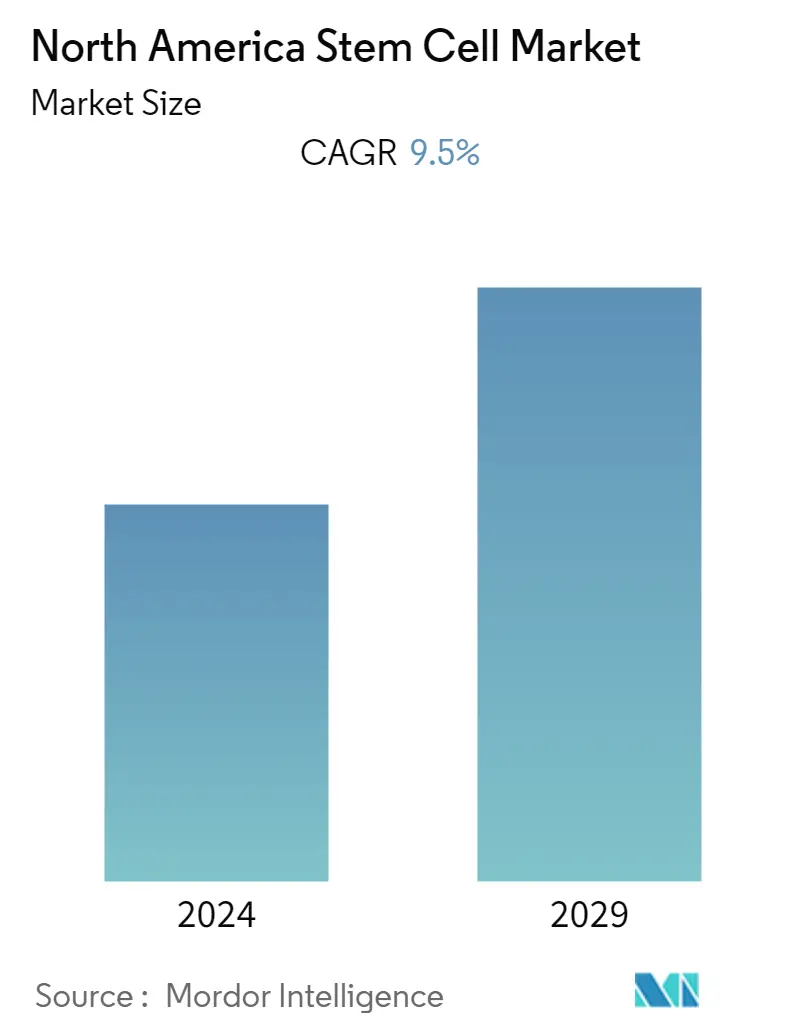
| Study Period | 2019 - 2029 |
| Base Year For Estimation | 2023 |
| Forecast Data Period | 2024 - 2029 |
| Historical Data Period | 2019 - 2022 |
| CAGR | 9.50 % |
| Market Concentration | Low |
Major Players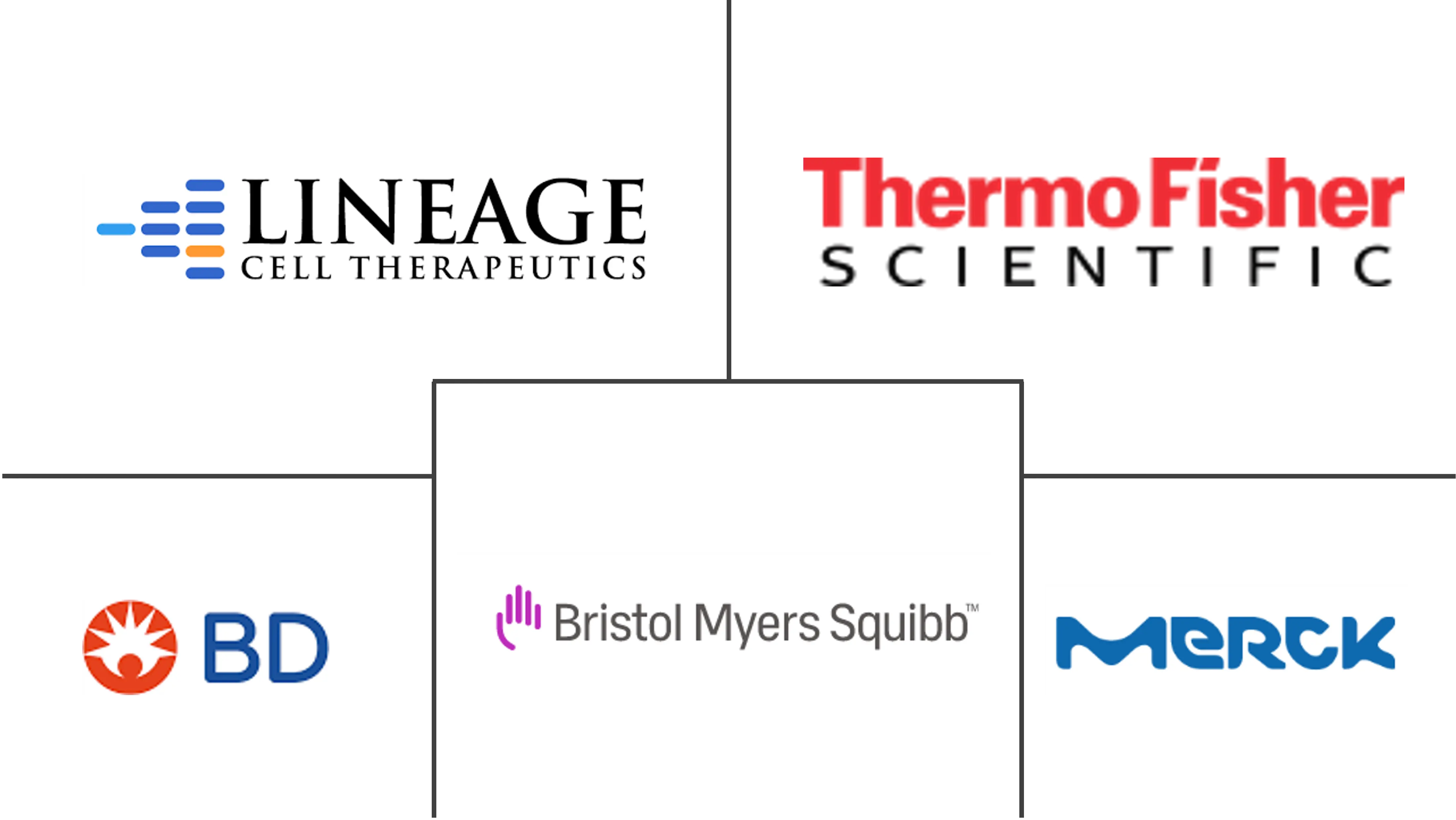
*Disclaimer: Major Players sorted in no particular order |
North America Stem Cell Market Analysis
The North American stem cell market is expected to witness a CAGR of 9.5% during the forecast period.
In the context of COVID-19, government organizations in various countries, research institutes, and many biotech and pharmaceutical firms were focusing on effective and rapid technologies for the fast diagnosis of COVID-19. According to a research article titled "Mesenchymal Stem Cell Therapy for COVID-19: Present or Future" published in April 2020, mesenchymal stem cells are a safe and effective approach to the treatment of COVID-19. Mesenchymal Stem Cells (MSCs)-based immunomodulation treatment has been proposed as a suitable therapeutic approach and several clinical trials have begun. The positive results from such studies had led to the development of new therapies for COVID-19 and thus can propel the growth of the market. For instance, in May 2020, Lineage Cell Therapeutics received a grant of USD 5 million from the California Institute for Regenerative Medicine (CIRM) to support the use of vacuum filter-derived stromal cells, Lineage's allogeneic dendritic cell therapy, for the development of a potential vaccine against SARS-CoV-2, the virus that causes COVID-19. Thus, the COVID-19 had significant impact on market growth.
Factors such as increased awareness about umbilical stem cells and growing demand for regenerative treatment options, coupled with rising research and development initiatives to develop stem cell therapies and increasing approvals for clinical trials in stem cell research, are majorly driving the growth of the market. The area of stem cell-based therapies garners significant investments, and various clinical trials that require considerable support for expenditure are currently underway. Companies are fundraising to develop stem cell-based therapies to tackle many diseases. For instance, in January 2022, Cellino Biotech, a cell therapy manufacturing company, raised USD 80 million in Series A financing round. Cellino plans to expand access to stem cell-based therapies by building the first autonomous human cell foundry by 2025. As the applications of stem cell technologies in the treatment of diseases have ultimately increased, so has the overall adoption rate of these technologies across the region. This has led to increased investments by the market players for the development of novel therapies in this area.
Thus, owing to the abovementioned factors, the market is expected to project significant growth over the forecast period. However, expensive procedures and regulatory complications, may hinder the growth of the market.
North America Stem Cell Market Trends
This section covers the major market trends shaping the North American Stem Cell Market according to our research experts:
The Oncology Segment is Expected to Show Lucrative Growth in the Therapeutic Application Type
The cancer burden has been increasing, and thus, cancer therapies must be modified according to regional and national priorities. according to the American Cancer Society, in 2022, there were an estimated 1,918,030 new cases of cancer in the United States, and 609,360 deaths were notified in the year 2022. It also reported that in males, the leading cancer sites in the country are prostate while in females it is breast cancer. Such an increasing burden of the disease is expected to propel the growth of the market. A bone marrow transplant, or stem cell transplant, is a treatment for some types of cancer, like leukemia, multiple myeloma, neuroblastoma, or some types of lymphoma. For cancer treatments, both autologous and allogeneic stem cell transplants are done. Autologous transplants are preferred in the cases of leukemias, lymphomas, multiple myeloma, testicular cancer, and neuroblastoma.
The strategic initiatives taken by the market players are also propelling the growth of the segment growth. For instance, in April 2021, Vertex Pharmaceuticals Incorporated received the United States Food and Drug Administration (FDA) Fast Track Designation for VX-880, and the company initiated a clinical trial for VX-880 in patients who have type 1 diabetes (T1D) with severe hypoglycemia and impaired hypoglycemic awareness. VX-880 is one of the first investigational stem cell-derived therapies utilizing fully differentiated, insulin-producing pancreatic islet cells for the treatment of type 1 diabetes. Such a fast approval procedure is expected to drive the growth of the market.
Thus, owing to the abovementioned factors, the market segment is expected to show growth over the forecast period.
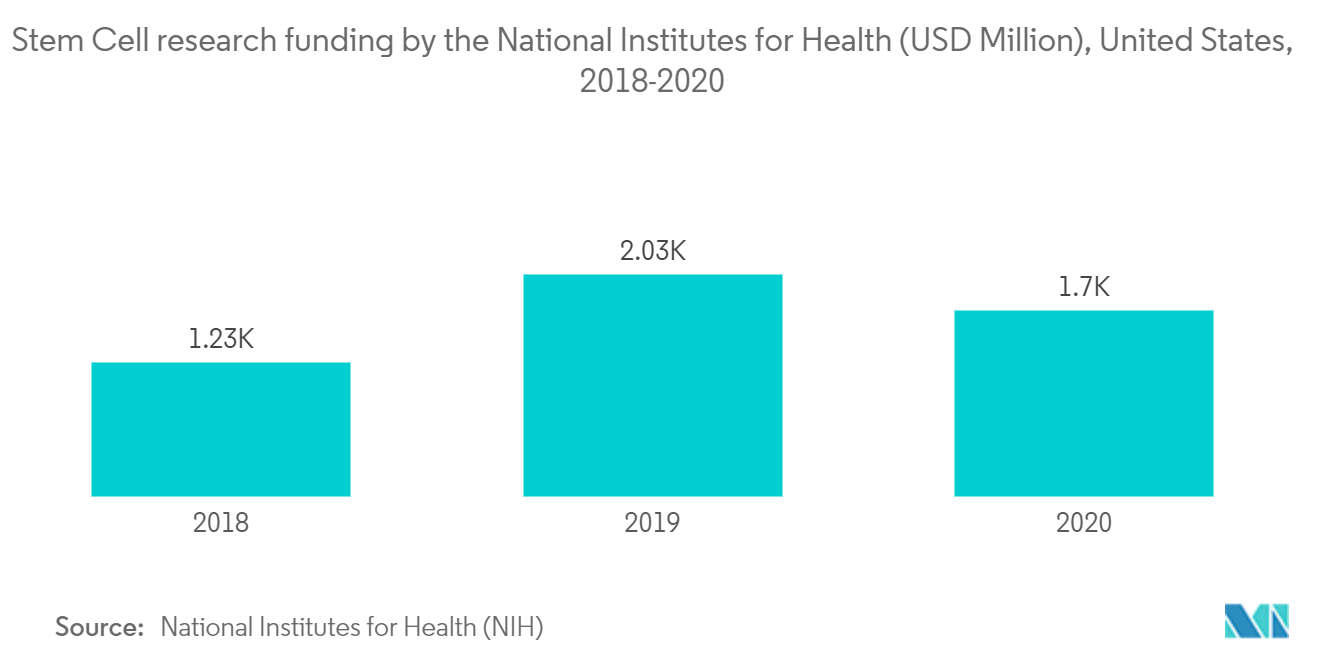
United States is Expected to Hold a Significant Share in the Market
The United States is estimated to retain the largest share of the stem cell market due to the presence of a strong regulatory framework to promote cellular therapy development, the existence of industry key players, and the presence of leading universities that support research activities in the United States. Factors attributing to the high growth of the market in the region include the increasing prevalence of chronic conditions, rising adoption of regenerative medicine, and rise in the number of clinical studies about the development of cellular therapies.
Rising investments from market players for the development and expansion of cell-based therapies in the United States are expected to drive the market in the United States. For instance, in January 2022, Cellino Biotech, an autonomous cell therapy manufacturing company, raised USD 80 million Series A financing round. Cellino plans to expand access to stem cell-based therapies with the intention to build the first autonomous human cell foundry in 2025. The applications of stem cell technologies in the treatment of diseases have ultimately increased the overall adoption rate of these technologies across the world. This has led to increased investments by market players in the development of novel therapies in this area.
Furthermore, improved results of stem cell therapy products for the treatment of diseases will lead to a rise in product development, which is expected to drive the growth of this market. For instance, in April 2022, BioCardia, Inc. a developer of cellular and cell-derived therapeutics for the treatment of cardiovascular and pulmonary diseases, announced U.S. Food and Drug Administration (FDA) approval of it's Investigational New Drug (IND) for NK1R+ Mesenchymal stem cells for the treatment of patients recovering from acute respiratory distress due to COVID-19.
Therefore, rising investments and research initiatives by the key market players and positive results of cell therapies are the factors expected to drive the growth of this market in United States.
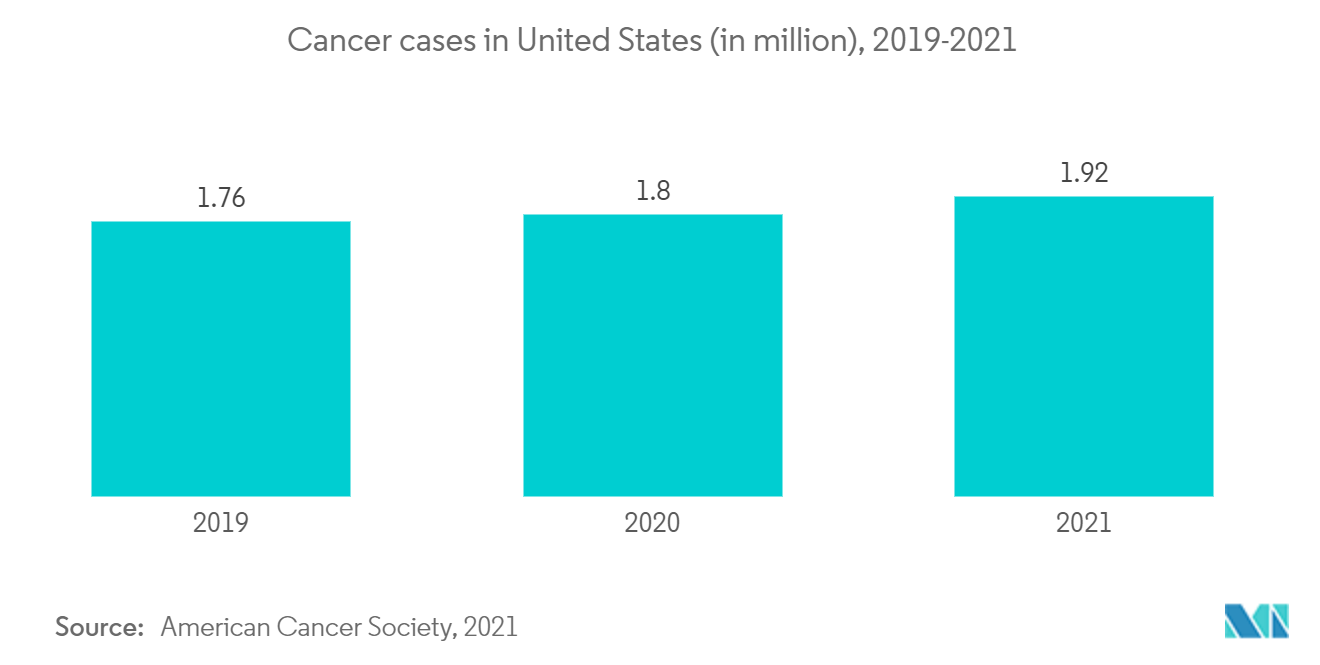
North America Stem Cell Industry Overview
The North American stem cell market, which is highly competitive, consists of several major players. These companies focus on expanding their offerings through extensive R&D and forming alliances and partnerships with other major players to sustain their market position. Becton, Dickinson and Company, Lineage Cell Therapeutics, Inc., Brainstorm Cell Therapeutics, International Stem Cell Corp., Miltenyi Biotec, Osiris Therapeutics Inc., Merck KGaA (Sigma Aldrich) Stem Cell Technologies, Bristol-Myers Squibb Company, and Thermo Fisher Scientific
North America Stem Cell Market Leaders
-
Becton, Dickinson and Company
-
Thermo Fisher Scientific
-
Lineage Cell Therapeutics, Inc.,
-
Merck KGaA (Sigma Aldrich)
-
Bristol-Myers Squibb Company
*Disclaimer: Major Players sorted in no particular order
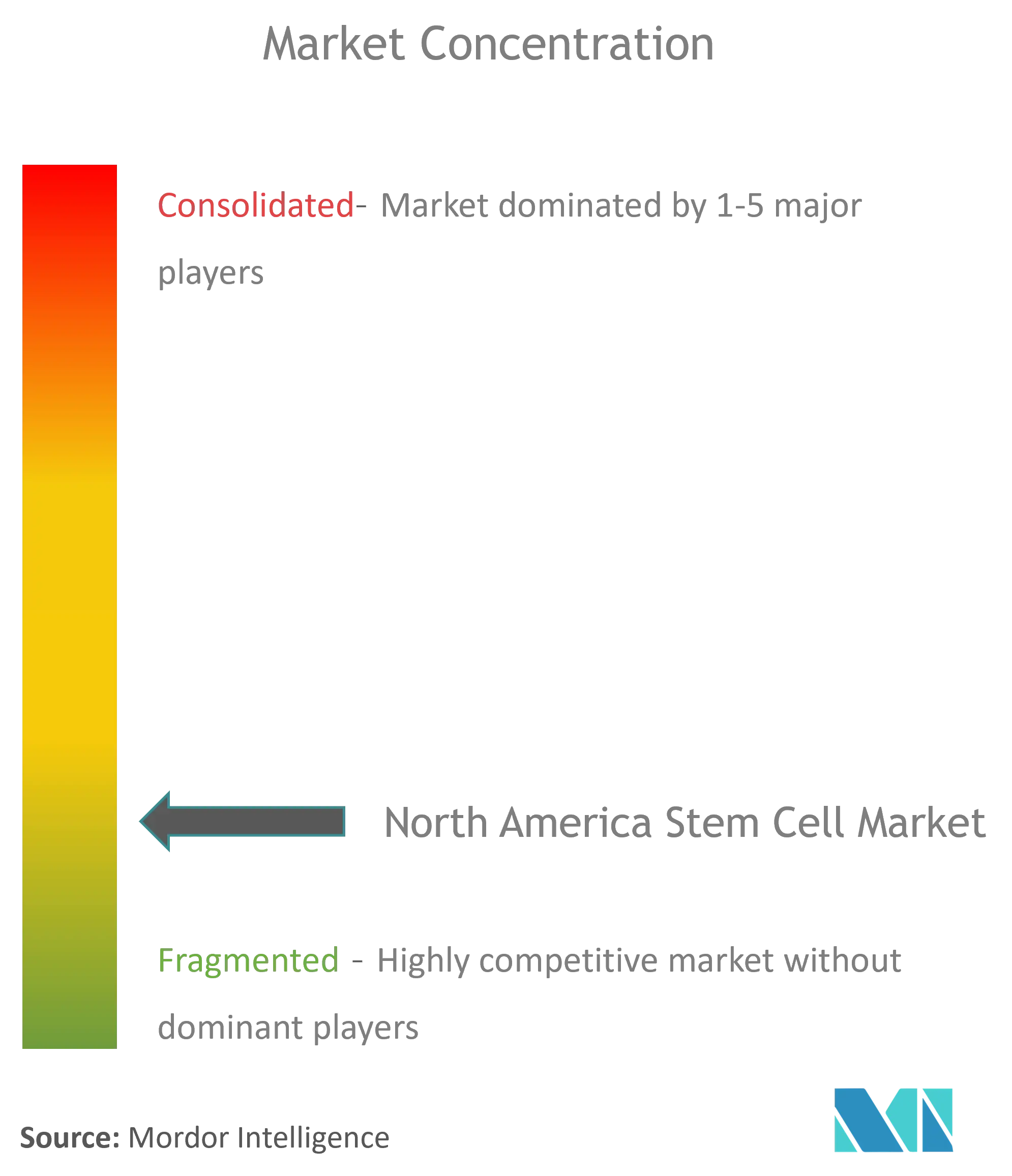
North America Stem Cell Market News
- In July 2022, CORESTEM (South Korea) continued enrolling participants for the Phase 3 clinical trial of NeuroNata-R, a stem cell therapy that is conditionally approved to treat amyotrophic lateral sclerosis (ALS) in South Korea.
- In September 2021, Stemedica Cell Technologies received investigational new drug (IND) approval from the United States food and drug administration for intravenous allogeneic mesenchymal stem cells (MSCs) to treat moderate to severe COVID-19.
North America Stem Cell Market Report - Table of Contents
1. INTRODUCTION
- 1.1 Study Assumptions and Market Definition
- 1.2 Scope of the Study
2. RESEARCH METHODOLOGY
3. EXECUTIVE SUMMARY
4. MARKET DYNAMICS
- 4.1 Market Overview
- 4.2 Introduction to Market Drivers and Restraints
-
4.3 Market Drivers
- 4.3.1 Increase in the Approval for Clinical Trials in Stem Cell Research
- 4.3.2 Growing Demand for Regenerative Treatment Option
- 4.3.3 Rising R&D Initiatives to Develop Therapeutic Options for Chronic Diseases
-
4.4 Market Restraints
- 4.4.1 Expensive Procedures
- 4.4.2 Regulatory Complications
-
4.5 Porter's Five Forces Analysis
- 4.5.1 Threat of New Entrants
- 4.5.2 Bargaining Power of Buyers/Consumers
- 4.5.3 Bargaining Power of Suppliers
- 4.5.4 Threat of Substitute Products
- 4.5.5 Intensity of Competitive Rivalry
5. MARKET SEGMENTATION (Market Size by Value - USD million)
-
5.1 By Product Type
- 5.1.1 Adult Stem Cell
- 5.1.2 Human Embryonic Cell
- 5.1.3 Pluripotent Stem Cell
- 5.1.4 Other Product Types
-
5.2 By Therapeutic Application
- 5.2.1 Neurological Disorders
- 5.2.2 Orthopedic Treatments
- 5.2.3 Oncology Disorders
- 5.2.4 Injuries and Wounds
- 5.2.5 Cardiovascular Disorders
- 5.2.6 Other Therapeutic Applications
-
5.3 By Treatment Type
- 5.3.1 Allogeneic Stem Cell Therapy
- 5.3.2 Auto logic Stem Cell Therapy
- 5.3.3 Syngeneic Stem Cell Therapy
-
5.4 Geography
- 5.4.1 United States
- 5.4.2 Canada
- 5.4.3 Mexico
6. COMPETITIVE LANDSCAPE
-
6.1 Company Profiles
- 6.1.1 Becton, Dickinson and Company
- 6.1.2 Lineage Cell Therapeutics, Inc.
- 6.1.3 Brainstorm Cell Therapeutics
- 6.1.4 International Stem Cell Corp.
- 6.1.5 Stem Cell Technologies
- 6.1.6 Miltenyi Biotec
- 6.1.7 Osiris Therapeutics Inc.
- 6.1.8 Sigma Aldrich (Merck KGaA)
- 6.1.9 Bristol-Myers Squibb Company
- 6.1.10 Thermo Fisher Scientific
- *List Not Exhaustive
7. MARKET OPPORTUNITIES AND FUTURE TRENDS
** Subject To AvailablityNorth America Stem Cell Industry Segmentation
As per the scope of the report, stem cells are biological cells that can differentiate into other types of cells. Additionally, various types of stem cells are used for therapeutic purposes. With multiple applications at the clinical stage for various diseases, these are being explored extensively by a large number of biopharmaceutical companies in recent times. The North America Stem Cell Market is segmented by Product Type (Adult Stem Cell, Human Embryonic Cell, Pluripotent Stem Cell, and Other Product Types), Application (Neurological Disorders, Orthopedic Treatments, Oncology Disorders, Injuries and Wounds, Cardiovascular Disorders, and Other Applications), Treatment Type (Allogeneic Stem Cell Therapy, Auto logic Stem Cell Therapy, and Syngeneic Stem Cell Therapy) and Geography. The report offers the value (in USD million) for the above segments.
| By Product Type | Adult Stem Cell |
| Human Embryonic Cell | |
| Pluripotent Stem Cell | |
| Other Product Types | |
| By Therapeutic Application | Neurological Disorders |
| Orthopedic Treatments | |
| Oncology Disorders | |
| Injuries and Wounds | |
| Cardiovascular Disorders | |
| Other Therapeutic Applications | |
| By Treatment Type | Allogeneic Stem Cell Therapy |
| Auto logic Stem Cell Therapy | |
| Syngeneic Stem Cell Therapy | |
| Geography | United States |
| Canada | |
| Mexico |
North America Stem Cell Market Research FAQs
What is the current North America Stem Cell Market size?
The North America Stem Cell Market is projected to register a CAGR of 9.5% during the forecast period (2024-2029)
Who are the key players in North America Stem Cell Market?
Becton, Dickinson and Company, Thermo Fisher Scientific, Lineage Cell Therapeutics, Inc.,, Merck KGaA (Sigma Aldrich) and Bristol-Myers Squibb Company are the major companies operating in the North America Stem Cell Market.
What years does this North America Stem Cell Market cover?
The report covers the North America Stem Cell Market historical market size for years: 2019, 2020, 2021, 2022 and 2023. The report also forecasts the North America Stem Cell Market size for years: 2024, 2025, 2026, 2027, 2028 and 2029.
North America Stem Cell Industry Report
Statistics for the 2024 North America Stem Cell market share, size and revenue growth rate, created by Mordor Intelligence™ Industry Reports. North America Stem Cell analysis includes a market forecast outlook 2029 and historical overview. Get a sample of this industry analysis as a free report PDF download.



